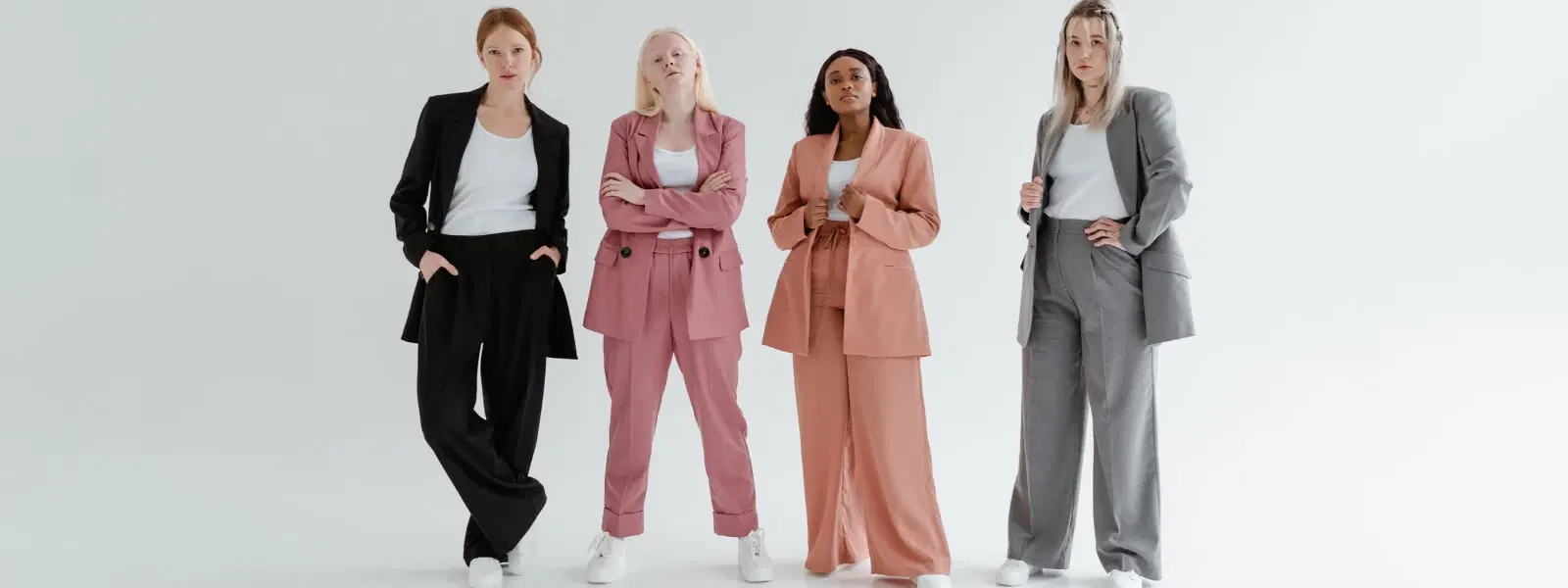
Apparel & Accessories
•04 min read
-b4b0ee01-7102-4782-b4cc-72450eaeb58c.png&w=3840&q=75)
Creating visually appealing and user-friendly fashion websites is essential to making your brand shine online. This guide shows you how to use external style sheet in HTML to design stunning websites for apparel and accessories. You will learn the step-by-step process of linking external CSS to your HTML, as well as advanced tips to enhance your web design with a fresh and on-trend appeal. By the end, you’ll have the insight to create stylish templates for clothing stores and accessory shops, delivering a cohesive and polished look across all pages.
External CSS refers to a separate file that contains styling rules for your website. This method allows you to keep your HTML clean and focused on structure while the CSS file manages the visual presentation. Using this approach in HTML for apparel e-commerce design ensures that your website remains organized and easy to update whenever fashion trends change.
External CSS offers a number of benefits that make it perfect for styling web pages for fashion websites. When you use an external style sheet in HTML, you achieve a consistent look and feel across your clothing store’s homepage, product listings, and accessory shop layouts. This not only saves time but also makes it easier to update the site design during season changes or promotional events. Moreover, a clean separation of style and structure helps in improving site performance, a crucial aspect for online fashion brands.
Key benefits include:
Consistency across multiple pages
Ease of updates for seasonal collections and promotions
Enhanced performance with cleaner code
Detailed customization to reflect your unique fashion identity
To start designing accessory shop layouts in HTML using external CSS, first create your CSS file. Save your styling rules in a file named, for example, styles.css. Then, link this file to your HTML document with the following code inside the <head> section:
<link rel="stylesheet" href="styles.css">
Finally, open your HTML in a browser to check that the styles are properly applied. This process is simple yet powerful, enabling you with HTML and CSS tips for apparel websites to create a truly engaging online store.
-961388ae-2e6f-4656-ab76-3780ab6a42c4.png&w=3840&q=75)
When working on using CSS for fashion brand websites, remember these best practices:
Use Relative Paths: Keep your CSS file in an organized directory to maintain efficient linking.
Optimize File Names: Choose meaningful names like fashion-styles.css to reflect the purpose of the file.
Leverage Media Queries: Write responsive rules to ensure a smooth experience on all devices, especially mobile.
Designing accessory shop layouts in HTML becomes a creative endeavor when you apply essential CSS styling rules. Start by selecting typography that reflects your brand’s elegance and identity. Your color palette should enhance your fashion website styling with external CSS, whether opting for soft pastels or bold tones. Additionally, designing product grids using CSS can help you achieve a neat and organized look that makes browsing enjoyable.
Other key styling aspects include:
Enhanced hover effects on buttons and images for interactivity
Structured layouts using Flexbox, ideal for designing accessory shop layouts in HTML
Integration of custom fonts via @font-face for unique identity
Dive deeper into the potential of external CSS by exploring advanced techniques. Use CSS transitions and animations to create an engaging experience for visitors. Employing Flexbox and CSS Grid can boost the responsive design of your online apparel stores. These techniques allow you to craft layouts that are not only aesthetically pleasing but also function seamlessly across different devices.
Did You Know? Using external CSS allows you to implement scalable design systems for fashion websites. Combining external CSS with preprocessor tools like SASS enables modular and efficient updates, vital for seasonal collections and ever-evolving fashion trends.
Here are some pro tips to elevate your design process when creating stylish templates for clothing stores. Focus on mobile-first design as a priority, since many fashion enthusiasts now shop on their smartphones. Utilize CSS variables to maintain consistency in colors and fonts. Lastly, incorporate accessibility features to ensure your website is inclusive and easy to navigate for everyone.
-68be3552-55c1-4572-9cbe-6f32de66a775.png&w=3840&q=75)
While designing an online apparel store using external CSS, common challenges can include managing large CSS files for multiple pages and ensuring cross-browser compatibility. Some designers face difficulties in maintaining consistent layouts across diverse devices and browsers, which is crucial for delivering an aspirational brand experience.
Effective solutions to these challenges include minifying your CSS with tools like CSSNano to improve loading times. Regular testing on various browsers such as Chrome, Firefox, Safari, and Edge ensures that your website design remains consistent. Additionally, writing responsive media queries achieves flexibility across different screen sizes, ensuring your content stays fresh and on-trend.
Add a <link> tag inside the <head> section of your HTML, specifying the href attribute for your CSS file.
Place the @import rule at the top of your CSS file to include another stylesheet. Example: @import url('additional-styles.css');
Link external files like CSS using the <link> tag or JavaScript using the <script> tag, ensuring they are placed in the appropriate HTML sections.
Use responsive design techniques including media queries and flexible layouts such as Flexbox and CSS Grid.
External CSS is a powerful tool for fashion website styling with external CSS. It enables designers to separate style from structure, making updates fast and ensuring a cohesive look across all pages. Whether you are styling web pages for fashion websites or working on HTML for apparel e-commerce design, the techniques and tips discussed here will help you transform your online presence into a canvas of creativity. Embrace these methods to cultivate a strong brand identity through fresh, innovative, and accessible design.